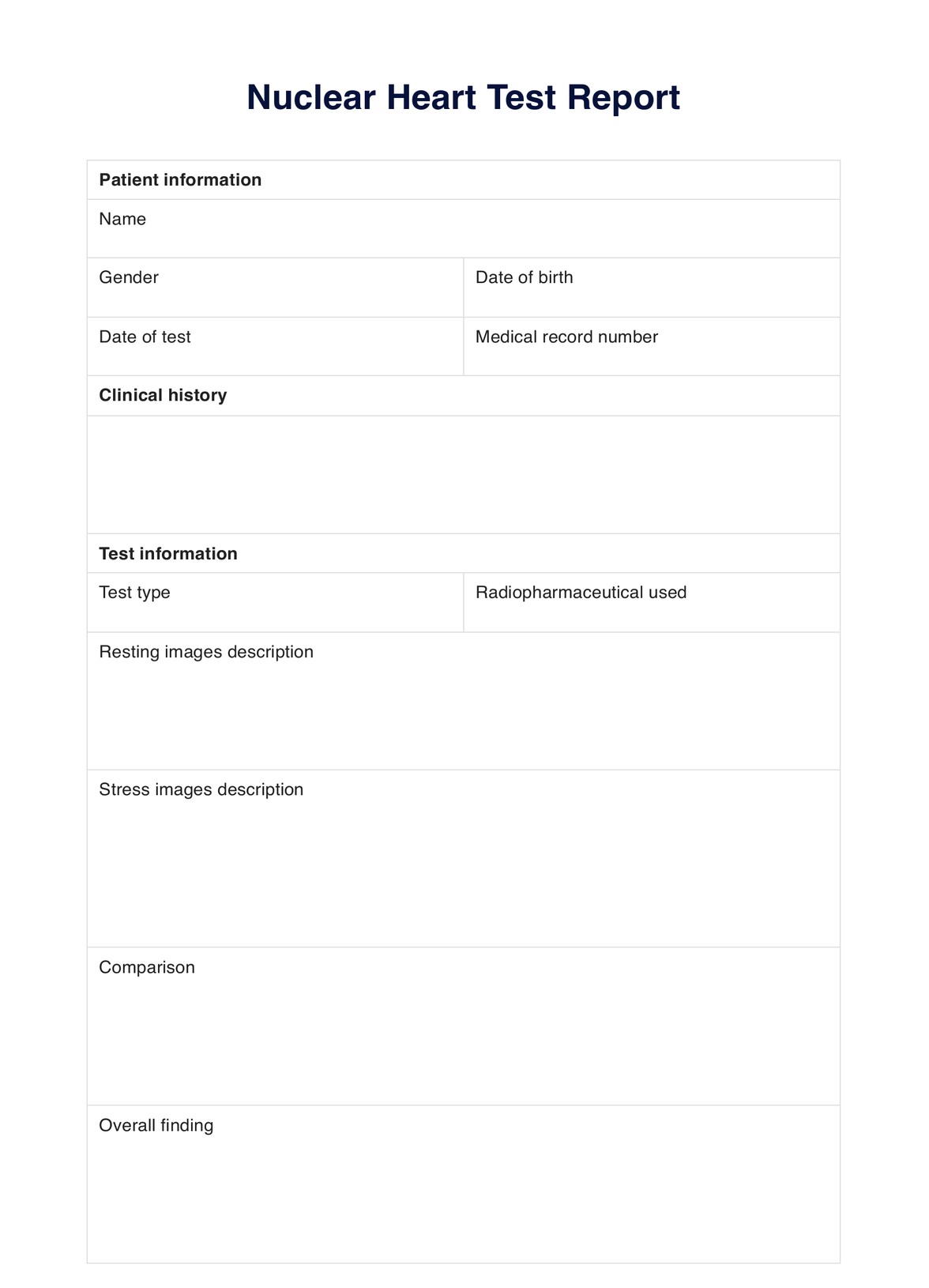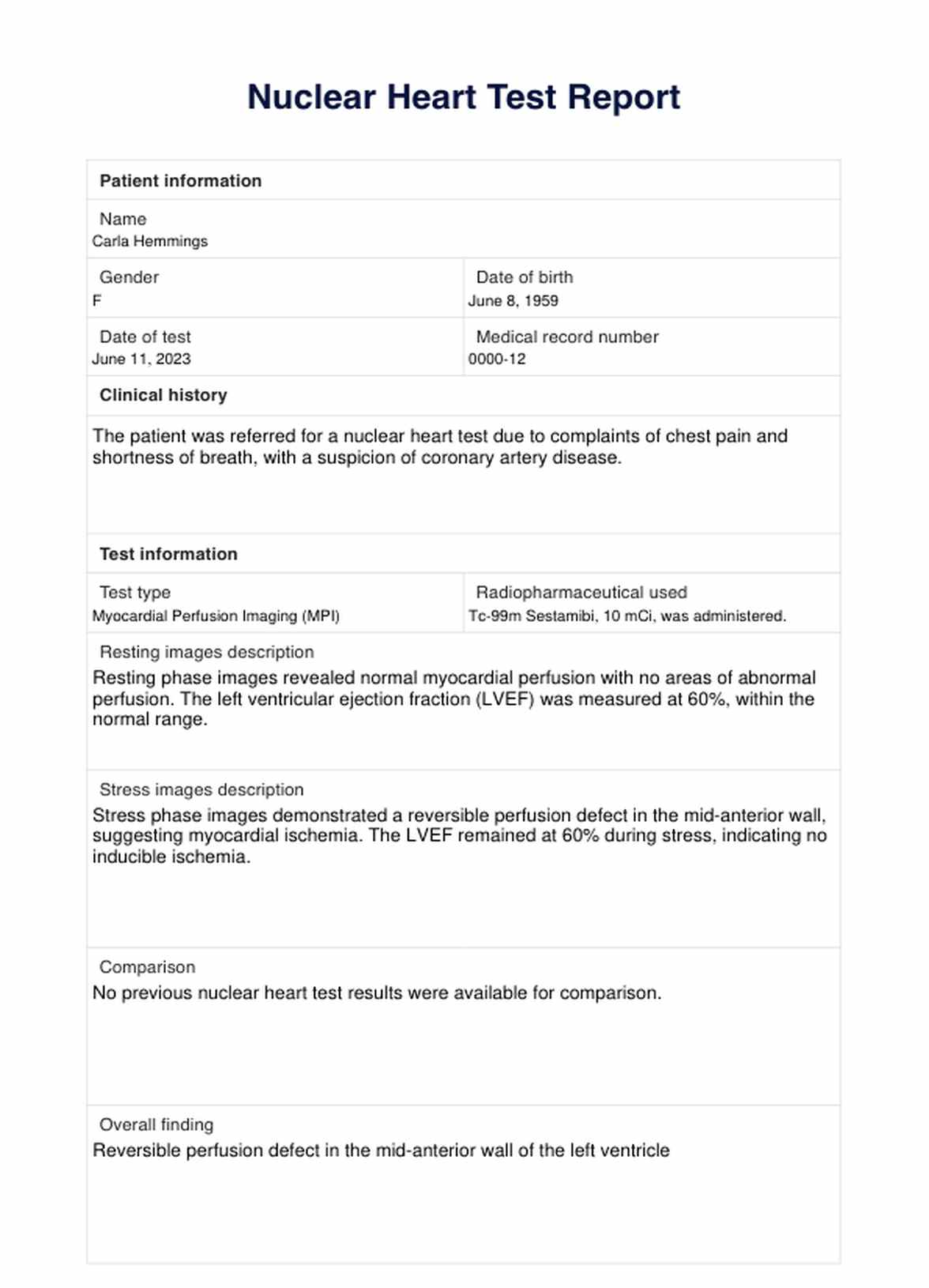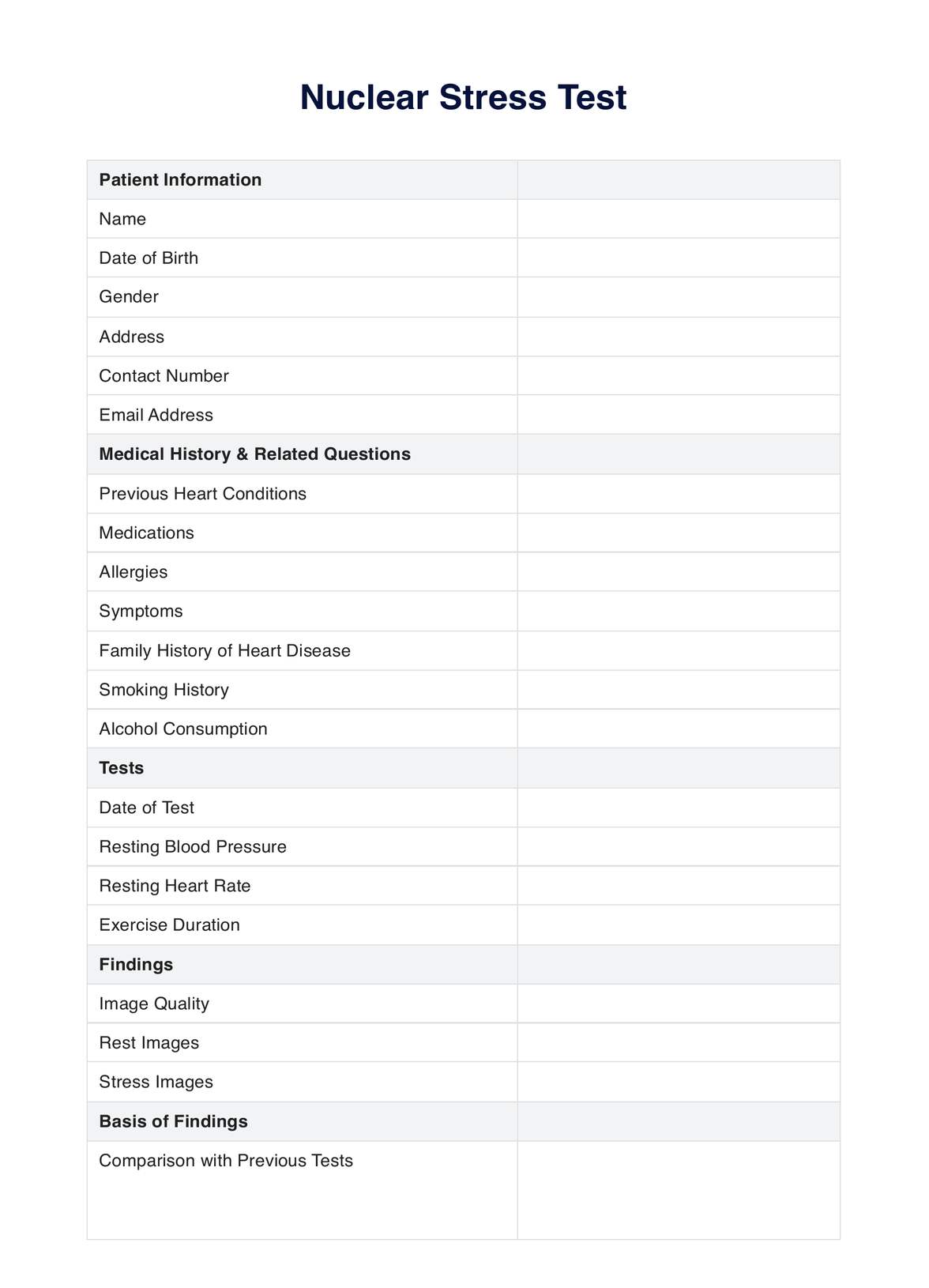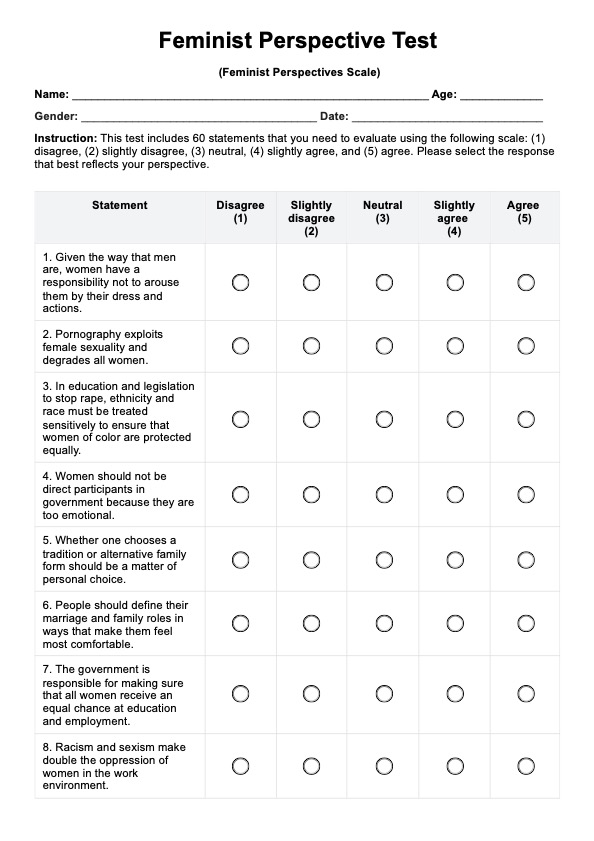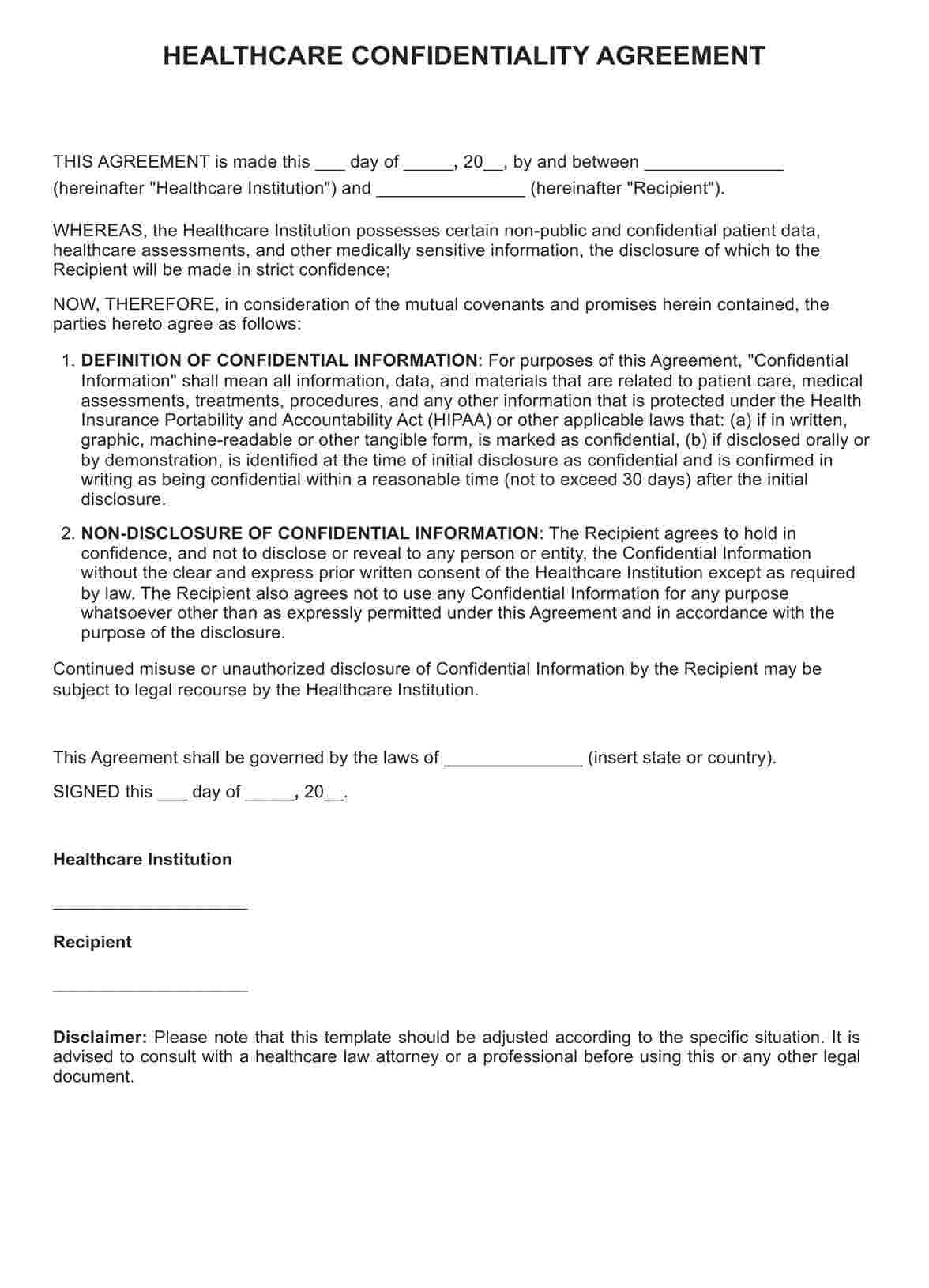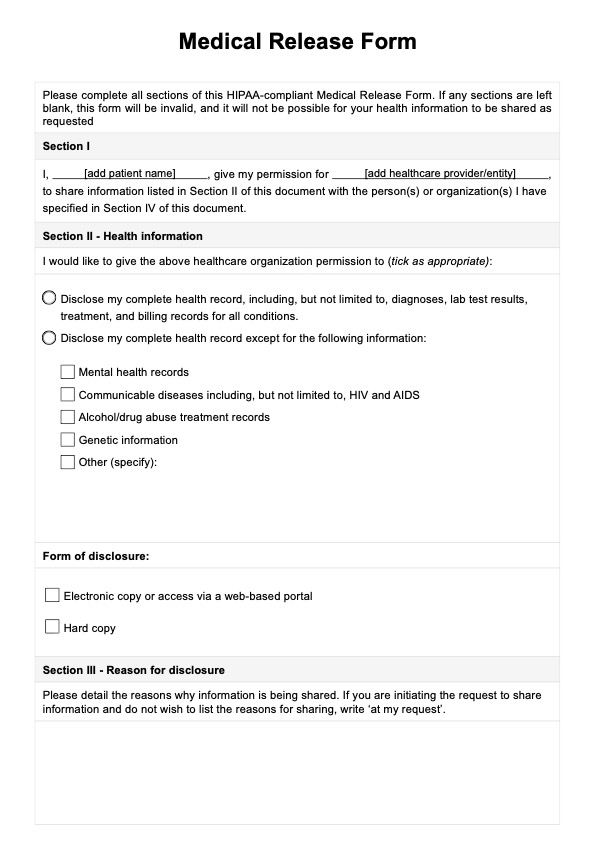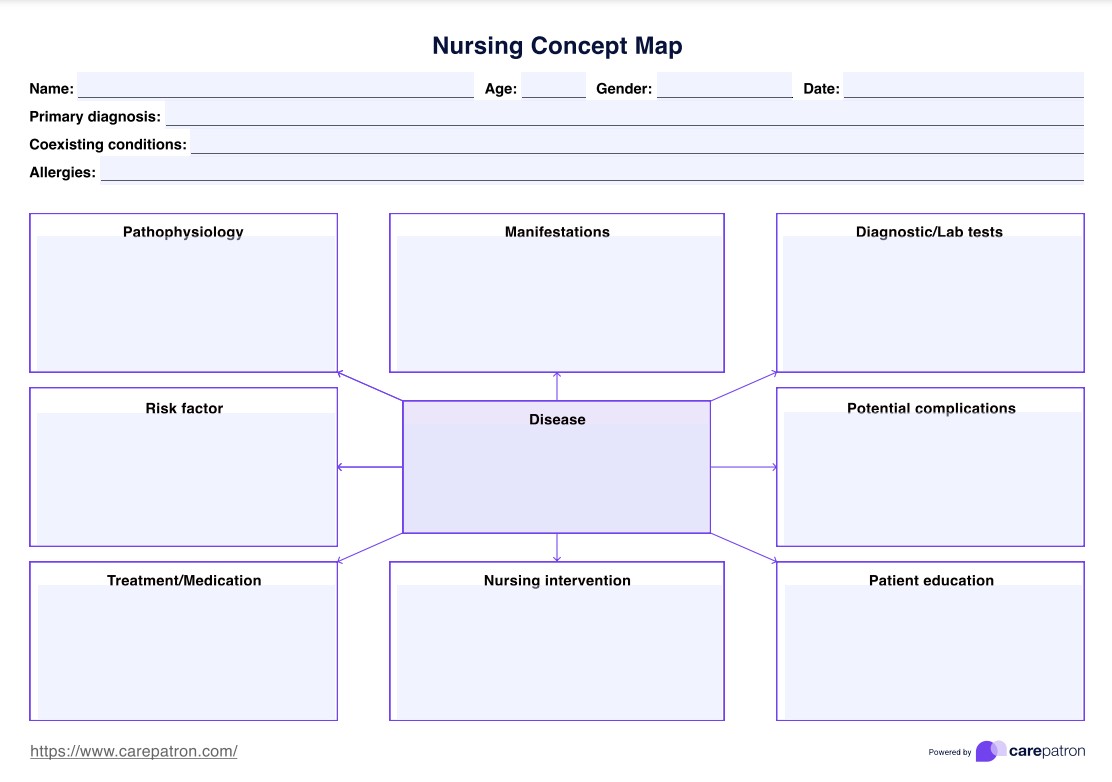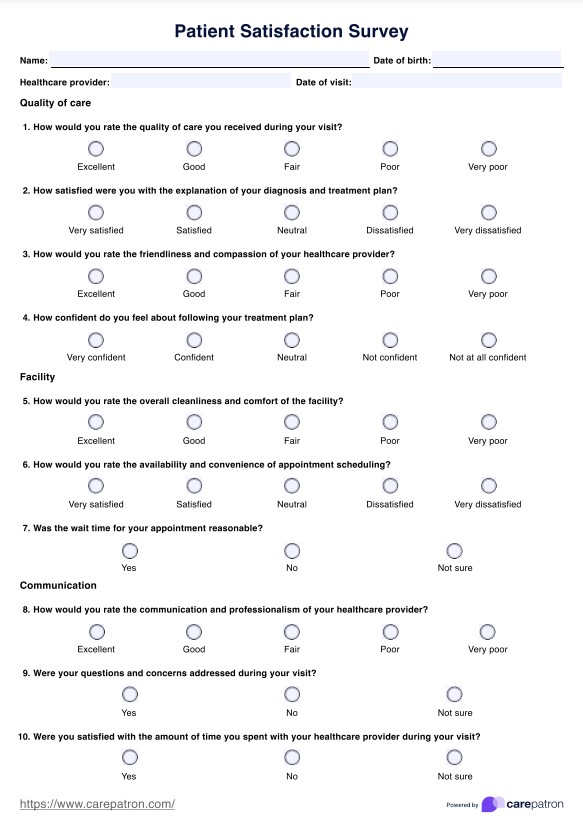Nuclear Heart
Get access to a free Nuclear Heart Test Report template. Document your patient results with a user-friendly PDF template.


What is a Nuclear Heart Test?
A Nuclear Heart Test, also known as a nuclear stress test or myocardial perfusion imaging, is a non-invasive procedure used to evaluate the blood flow to the heart. It involves injecting a small amount of radioactive tracer into the patient's bloodstream and taking images of the heart at rest and during exercise using a special camera.
Generally, patients prepare for a Nuclear Heart Test by avoiding caffeine and certain medications that may interfere with the results. During the test, the patient is connected to an electrocardiogram (ECG) machine to monitor their heart rate and blood pressure. They will then walk on a treadmill or pedal an exercise bike while the healthcare provider injects the tracer into their bloodstream.
The entire procedure takes about four hours, including the resting images and exercise portion. After the test, patients are usually advised to drink plenty of fluids to help flush out the radioactive tracer from their bodies.
Healthcare professionals perform this examination to assess for coronary artery disease, heart valve problems, and other cardiac conditions. It is often ordered for patients with chest pain, shortness of breath, or abnormal heart rhythms. The test can also be used to monitor the effectiveness of treatments for existing heart conditions.
The results are recorded in a Nuclear Heart Test Report, which includes details of the patient's medical history, medications, and any relevant lab results. The report also provides a visual representation of the images taken during the procedure and an interpretation of these findings by a cardiologist.
Nuclear Heart Template
Nuclear Heart Example
How Does it Work?
Our printable Nuclear Heart Test Report helps you easily document your patient's results. Follow these steps to get started:
Step 1: Access the template
Download the free Nuclear Heart Test Report template using the link on this page. You may also get a copy from the Carepatron app or our general practice management software's resources library.
Step 2: Document patient details
Enter the patient's personal information into the designated fields, including name, date of birth, and medical history. This will ensure that the report is accurately linked to their medical records.
Step 3: Record test information
Input the date of the test, as well as any necessary medications or diagnostic tools used during the procedure.
Step 4: Add images
Include any relevant images from the nuclear heart test, such as scans or X-rays. You can easily upload these onto the template for easy reference.
Step 5: Interpret results
Using your medical expertise, interpret the results and provide a diagnosis or relevant observations. This section allows you to explain the significance of the test findings in simple language for your patient's understanding.
Step 6: Recommendations
Based on the results, make recommendations for further medical interventions or lifestyle changes that may improve your patient's heart health. Make sure to answer any questions or concerns they may have regarding the test and its implications.
When Would You Use This Template?
You can use our Nuclear Heart Test Report template for any patient who has undergone the examination, whether for monitoring purposes or as part of their diagnostic process. Moreover, you can employ the template to:
Track and monitor changes in a patient's heart health over time
With the Nuclear Heart Test Report template, you can easily document and track changes in your patient's heart health throughout their treatment. This allows for a more accurate assessment of their progress and helps make informed decisions regarding their care plan.
Communicate test results and recommendations to patients
The template provides a clear and concise format for reporting test results to patients. It includes a section for the results and their implications, as well as recommendations for further medical interventions or lifestyle changes. This will help your patients better understand their test results and take appropriate actions to improve their heart health.
Maintain thorough and organized documentation
The Nuclear Heart Test Report template ensures all essential information is included in one document, making it easier to organize your patients' electronic health records. This can also be helpful in case of any legal or insurance-related purposes.
Save time and effort
Using our template saves time and effort in creating a customized report for each patient. It provides a standardized format that can quickly be filled in with the necessary information, reducing the need for manual formatting and allowing you to focus on your patient's care.
Improve patient satisfaction and trust
By providing a professional and comprehensive report to your patients, they will feel more involved in their treatment process and have a better understanding of their condition. This can lead to increased satisfaction and trust in their medical care.
You can use the Nuclear Stress Test Template to assess the heart’s performance under stress, providing critical insights for cardiovascular care. Additionally, the Stress Test Template can help evaluate general stress impacts on your clients, aiding in the development of tailored stress management strategies. Integrating these templates with a Care Plan Template ensures a comprehensive approach to managing both cardiovascular and stress-related issues, enhancing overall client outcomes.
What Do the Results Mean?
The results of the Nuclear Heart Test can shed light on the health of your patient's heart and indicate the presence or absence of heart disease. Here are what the different results may show:
● Normal result: A normal result means no evidence of heart disease or any blockages in the coronary arteries. However, it does not rule out the possibility of future development of heart disease.
● Abnormal result: An abnormal result could suggest the presence of coronary artery disease or other heart conditions that require further evaluation and management.
● Inconclusive result: An inconclusive result means that the test did not provide enough information to make a definitive diagnosis. Further testing may be needed for a more accurate assessment.
You should interpret the test results based on your patient's medical history and other diagnostic tests. Moreover, it is essential to communicate the results and their implications clearly with your patient.
Commonly asked questions
Healthcare professionals, such as cardiologists or primary care physicians, may request a Nuclear Heart Test for their patients if they suspect heart disease or want to assess the overall health of the patient's heart.
As with any medical procedure involving radiation exposure, there is a slight risk of developing cancer in the long term. However, the benefits of accurately diagnosing and managing heart disease often outweigh this small risk.
The length of a Nuclear Heart Test may vary, but on average, it takes about 4-6 hours to complete. This includes the time for preparation, imaging, and rest periods in between.


